All Management Events
- The war of drones: A workshop on the latest potent technology November 28, 2022
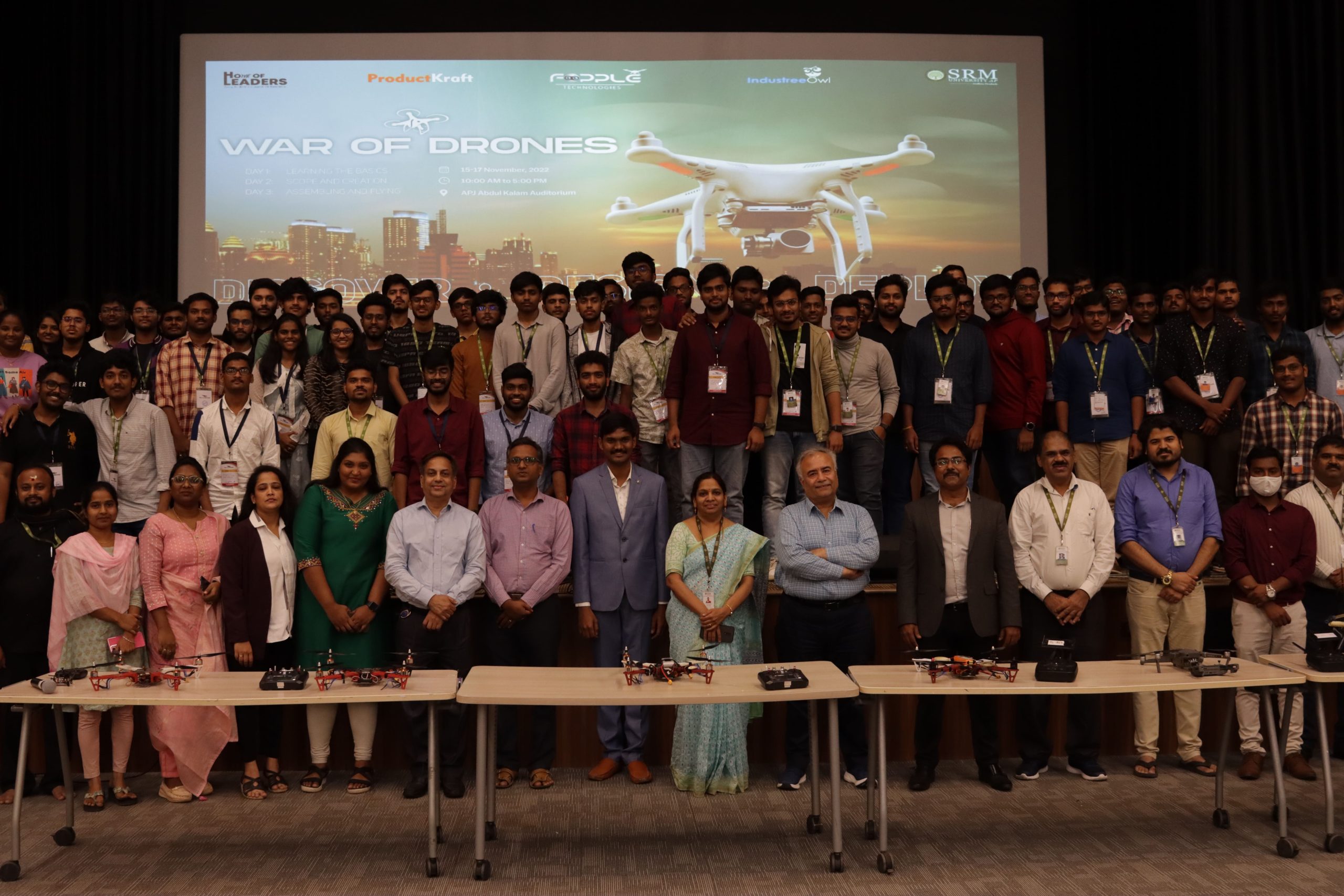 Drones are steadily evolving technology with a wide array of applications in various sectors that, over the next decade, will change in ways that are unimagined. The War of Drones, a workshop on drone technology organised by the Directorate of Entrepreneurship and Innovation, got off the ground on Monday, November 14, 2022. The three-day-long sessions were under the guidance of Sri Gopi Raja, CEO of Fopple Technology Pvt Ltd. Andra Pradesh. The workshop came to an end after the theory, assembling of drones, and the final drone flying sessions that lasted for three days.
Drones are steadily evolving technology with a wide array of applications in various sectors that, over the next decade, will change in ways that are unimagined. The War of Drones, a workshop on drone technology organised by the Directorate of Entrepreneurship and Innovation, got off the ground on Monday, November 14, 2022. The three-day-long sessions were under the guidance of Sri Gopi Raja, CEO of Fopple Technology Pvt Ltd. Andra Pradesh. The workshop came to an end after the theory, assembling of drones, and the final drone flying sessions that lasted for three days.“If someone wants to talk about Drones, they need to talk about Andhra Pradesh,” said Sri Gopi Raja as he addressed the students by highlighting the hand of the state in promoting and modifying the technology nationwide. He highlighted the amplifying relevance of drone technology in the field of agriculture by explaining the various pathbreaking methods and their benefits. He also hinted at the chances for launching a Drones Centre of Excellence at the university.
Honourable Vice Chancellor Prof Manoj K Arora and other dignitaries graced the workshop’s final day with their presence. About 110 students participated in the exciting and engaging workshop to advance their understanding of the latest and promising technology of drones. Students were fascinated by the idea of flying a drone by the end of the workshop. The sessions conferred on the various aspects and applications of drones and allied technologies. The experimental event allowed students to get insights into drone technology from industry experts. They were exposed to hand on assembling and operations of drones. Furthermore, the future and scope of the promising technology were also discussed during the workshop.
Continue reading → - Novel antenna-duplexer for off-body communication November 28, 2022
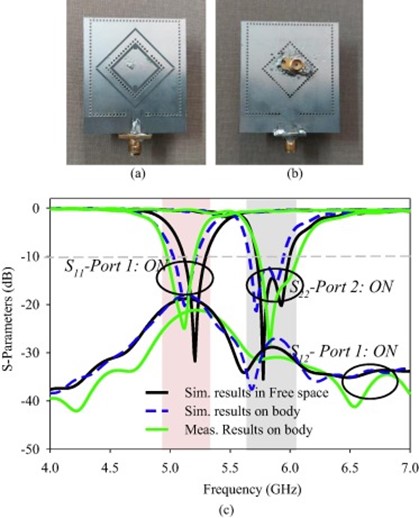
With the recent advancements in modern wireless body area network (WBAN) communication, the demand for compact low-profile wireless computing devices has witnessed a vast increase. Consequently, the antennas which play a critical role in this network are developed with different polarization in distinct frequency bands so as to maintain better reliability of communication links. Dr Divya Chaturvedi, Assistant Professor, Department of Electronics and Communication Engineering, has published a paper titled, “A Dual-Band Dual-Polarized SIW Cavity-Backed Antenna-Duplexer for Off-body Communication” as first author in the Q1 Journal AEJ – Alexandria Engineering Journal having an impact factor of 6.77. The paper discusses the self-duplexing antennas, offering two channels for concurrent transmission and reception, leading to a simple and compact transceiver.
Abstract
A novel dual-band, dual-polarized antenna-duplexer scheme is intended to be used for WLAN 802.11a and ISM band applications using Substrate Integrated Waveguide (SIW) Technology. The antenna consists of two planar SIW cavities of different dimensions where a smaller sized diamond- shaped cavity is inserted inside the larger rectangular cavity to share the common aperture area. The diamond-ring shaped slots are etched in each cavity for radiation. The larger diamond ring slot is excited with a microstrip feedline to operate at 5.2 GHz while the smaller slot is excited with a coaxial probe to operate at 5.8 GHz. The antenna produces linear polarization at 5.2 GHz (5.1–5.3 GHz) due to the merging of TE 110 and TE 120 cavity modes while circular polarization around 5.8 GHz due to orthogonally excited TM100 and TM010 modes (5.68–5.95 GHz). The slots are excited in an orthogonal fashion to maintain a better decoupling between the ports (i.e. –23 dB). The performance of the antenna has been verified in free space as well as in the vicinity of the human body. The antenna offers the gain of 6.2 dBi /6.6 dBi in free space and 5.8 dBi / 6.4 dBi on-body at lower-/ higher frequency-bands, respectively. Also, the specific absorption rate (SAR) is obtained < 0.245 W/Kg for 0.5 W input power averaged over 10 mW/g mass of the tissue. The proposed design is a low-profile, compact single-layered design, which is a suitable option for off-body communication.
Explanation of the research in layperson’s terms
- This antenna can operate in dual radio frequency bands at 5.2 GHz and 5.8 GHz respectively.
- The antenna can be used in the medical instrument to make it wire-free.
- The antenna is compact in size, thus can be accommodated in a small space.
- The antenna can operate simultaneously at both the frequency bands, thus at the same time it can help in forming links with another on-body antenna and makes the link with Wi-Fi.
- The antenna is validated in terms of Specific absorption rate, hence it is safe to use on the human body.
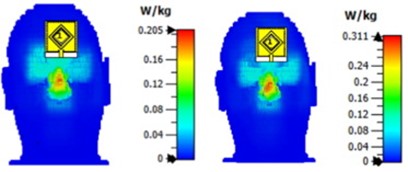
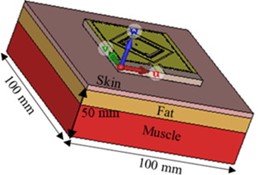
The paper further expounds on the social implication of this innovative research. Dr Chaturvedi explains that the antenna, being dual-band and dual-polarized, can function as a transceiver circuit. Due to different polarization, it can operate in both the frequency bands simultaneously without affecting the performance. In the first frequency band at 5.2 GHz, it can link with Wi-Fi and in the second frequency band at 5.8 GHz, it is able to communicate with antennas placed in other medical instruments which are used in the vicinity of the human body.
Collaborations
1. Dr Arvind Kumar, Assis. Professor, b Department of Electronics and Communication
Engineering, VNIT Nagpur, India2. Dr Ayman A Althuwayb, Department of Electrical Engineering, College of Engineering,
Continue reading →
Jouf University, Sakaka, Aljouf 72388, Saudi Arabia - Dr M Thiripalraju November 23, 2022
- Acing national-level innovation marathon November 23, 2022
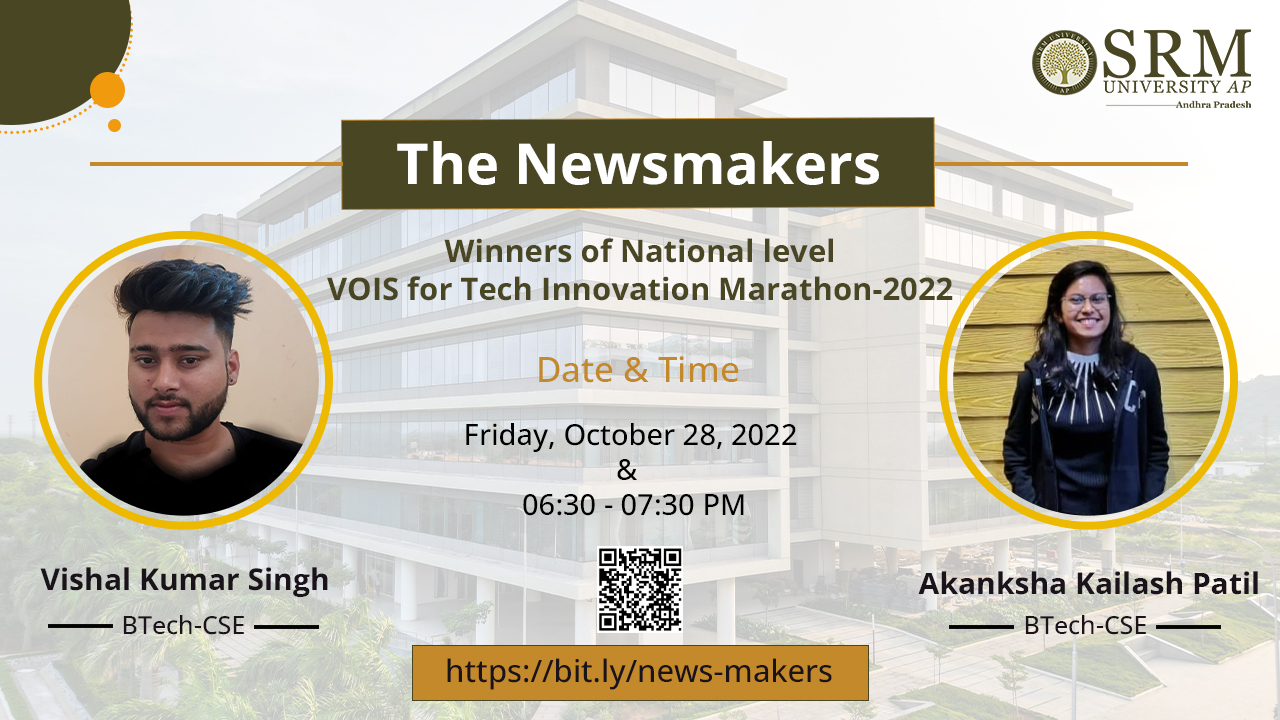 Vishal and Akanksha, students of SRM University- AP, won the National level VOIS for Tech Innovation Marathon 2022, which began on October 14 in Pune. They received a cash prize of Rs.2 lakhs, along with certificates and mementoes. Vodafone India, Voice, and Connecting Dreams Foundation jointly organised the Technology Marathon-2022 competition to bring out the latent technological creativity among engineering students.
Vishal and Akanksha, students of SRM University- AP, won the National level VOIS for Tech Innovation Marathon 2022, which began on October 14 in Pune. They received a cash prize of Rs.2 lakhs, along with certificates and mementoes. Vodafone India, Voice, and Connecting Dreams Foundation jointly organised the Technology Marathon-2022 competition to bring out the latent technological creativity among engineering students.Five hundred sixty teams from all over the country participated in the competition. Third-year Computer Science Engineering students Vishal Kumar Singh and Akanksha Patil participated in the competition on behalf of SRM University- AP. Both showed excellent talent and bagged the first position in the three-stage project presentation, Q&A, and review competitions. The organisers rewarded them with Rs.2 lakh and other souvenirs.
The winners, Vishal and Akanksha, were felicitated by President Dr P Satyanarayanan, Vice Chancellor Prof Manoj K Arora, and Registrar Dr Prem Kumar of SRM University- AP on Tuesday.
Continue reading → - One World, Many Cultures, One Home November 23, 2022
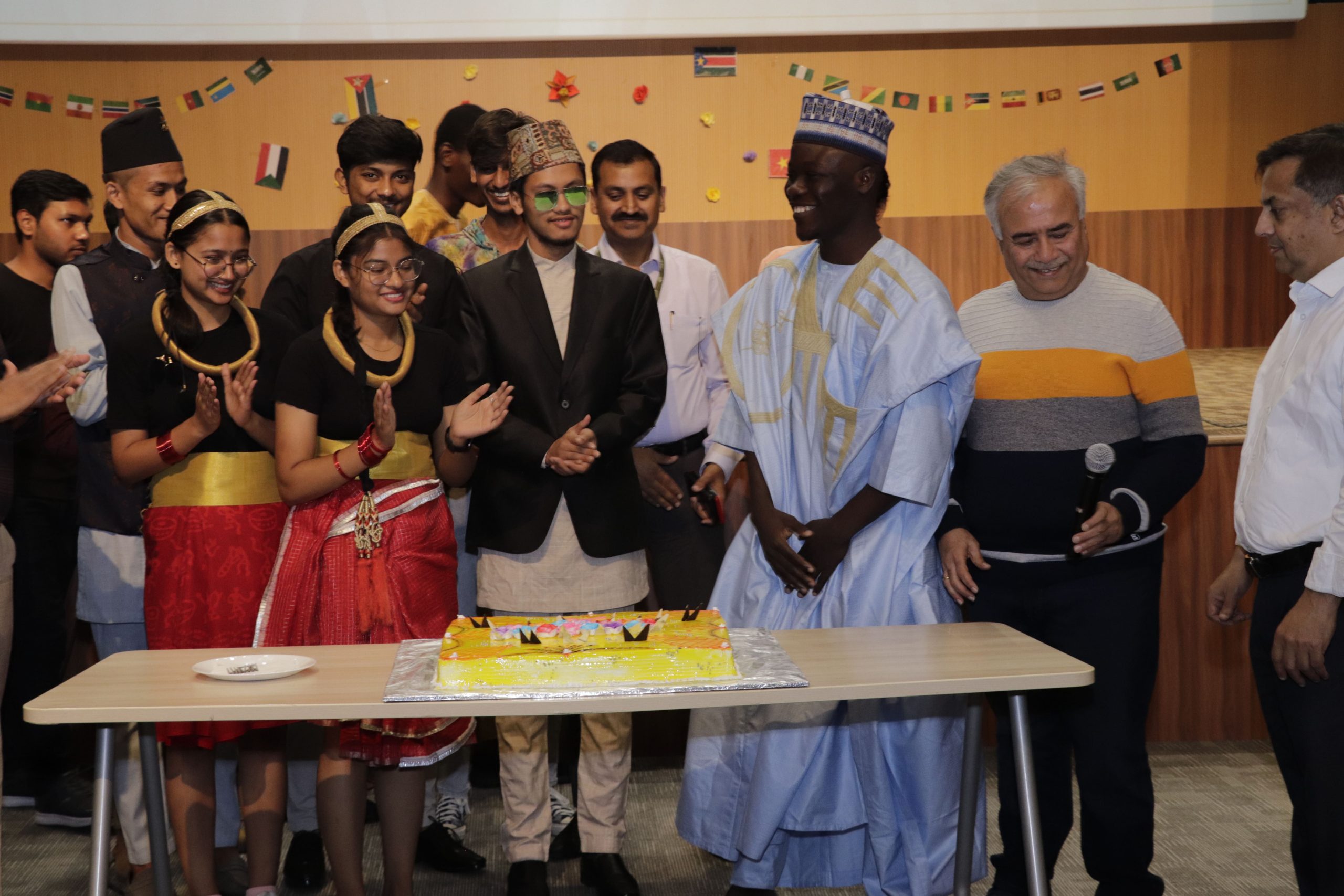 International Students’ Day is a global celebration of the student community that takes place on November 17 every year. Universities observe this day as a non-political celebration of the multiculturalism of their international students. The Directorate of International Relations and Higher Studies at SRM University- AP celebrated multiculturalism, diversity, and traditions with students from more than 30 countries across the globe on International Students’ Day.
International Students’ Day is a global celebration of the student community that takes place on November 17 every year. Universities observe this day as a non-political celebration of the multiculturalism of their international students. The Directorate of International Relations and Higher Studies at SRM University- AP celebrated multiculturalism, diversity, and traditions with students from more than 30 countries across the globe on International Students’ Day.“You are not international students; you are students of SRM AP. Once you are students of SRM AP, there is no differentiation between Domestic and International students”, said Vice Chancellor Prof Manoj K Arora addressing the students. On the occasion, Prof. Arora launched the Annual Magazine and International Students Handbook prepared by the Directorate of International Relations and Higher Studies. Dr P Naga Swetha, Associate Director, International Relations and Higher Studies, highlighted the importance of celebrating diversity and promoting creativity through cultural events. “At SRM AP, diversity is an essential binding agent of the interdisciplinary approach to education, as well as to the greater life experience”, she added.
Students enthusiastically talked about the facilities, curriculum, and support they receive at SRM AP. “I have no words to express how well I am treated on campus”, said Sara, a Syrian student in MBA Programme. “This is a very welcoming place, and I have made the right decision by choosing SRM AP to study in India”, added Muskan from Nepal. Tanira from Srilanka expressed his happiness in witnessing a variety of cultural programmes that foster respect and open-mindedness for other cultures.
To mark this occasion, international students showcased their rich culture through music, folk dance performances, and by identifying themselves in the traditional attires of their native countries. The students also presented a Nukkad Natak emphasising the significance of ‘one world, many cultures, one home’.
Aiming for significant global impact, the Directorate of International Relations and Higher Studies at SRM University-AP encourages the spirit of curiosity in students and faculty for multidisciplinary collaborations, inbound and outbound exchanges, research, and outreach programmes. A centralised portal to access/share international opportunities, higher studies training and support for students was launched by Mr Surendra Tipparaju, Director-Data and Artificial Intelligence at Microsoft recently.
Continue reading → - Dr V L Narasimham November 23, 2022
- Dr Mudassir Rafi November 22, 2022
- Mr Rajkumar Elagiri Ramalingam November 22, 2022
- Dr Ch Anil Carie November 21, 2022
- Dr Rajkumar Elagiri Ramalingam November 18, 2022

